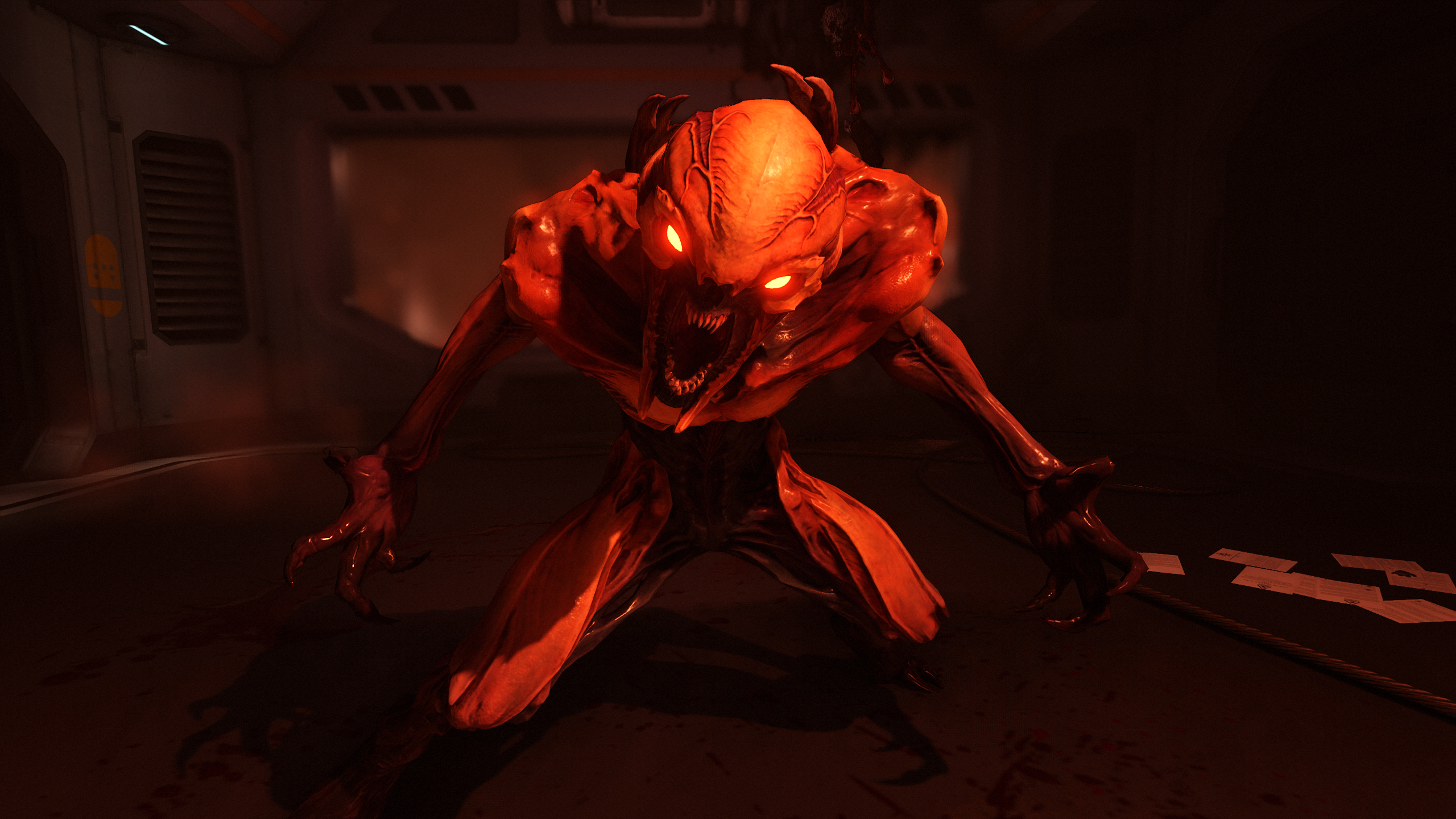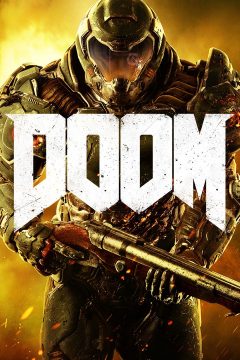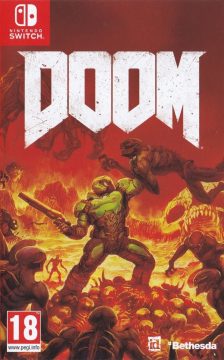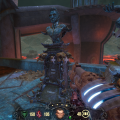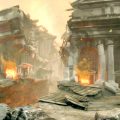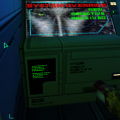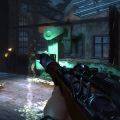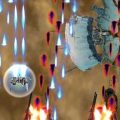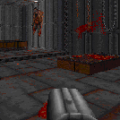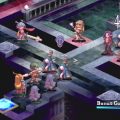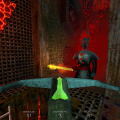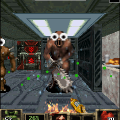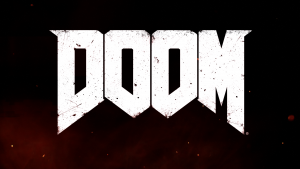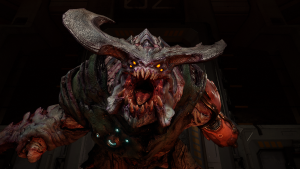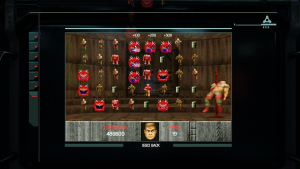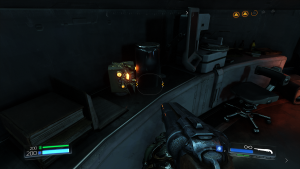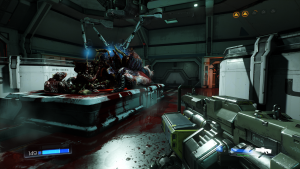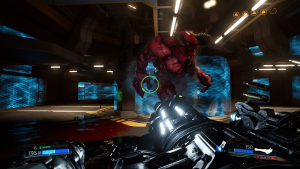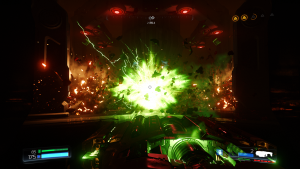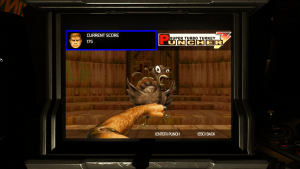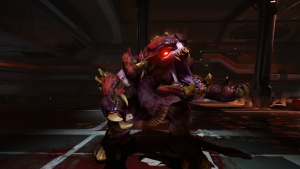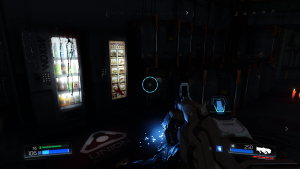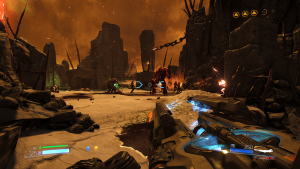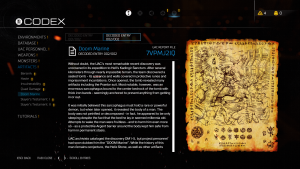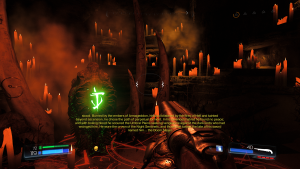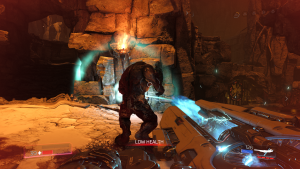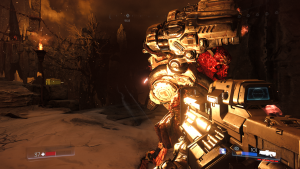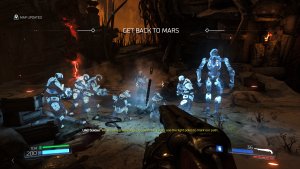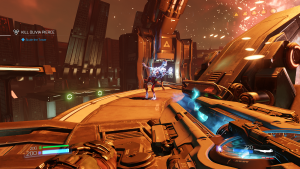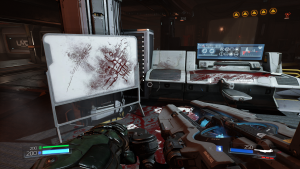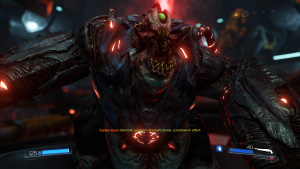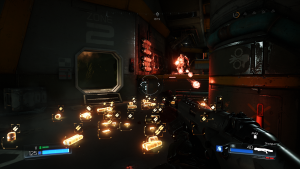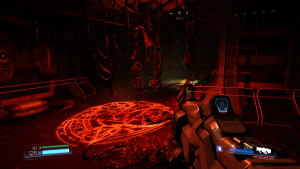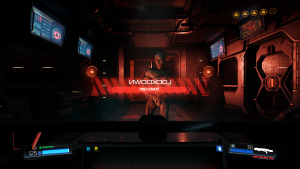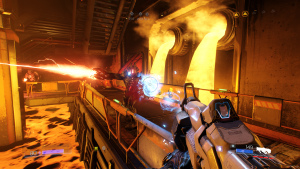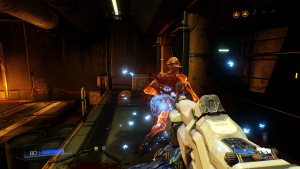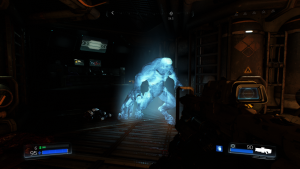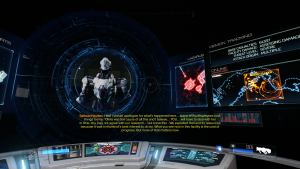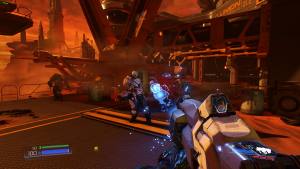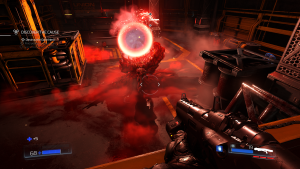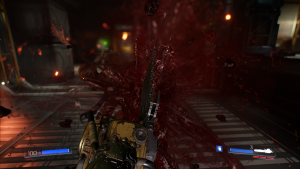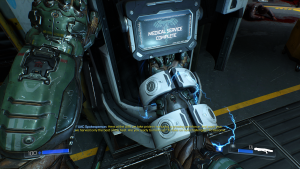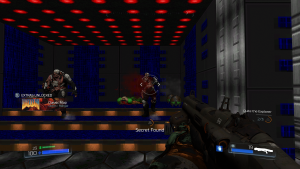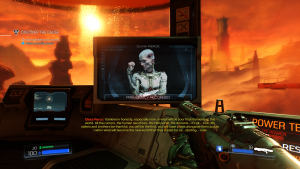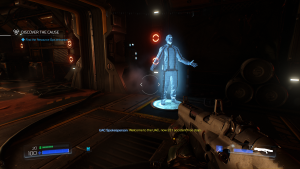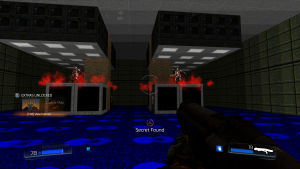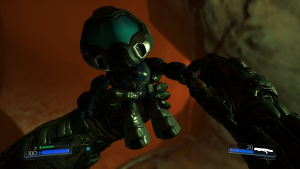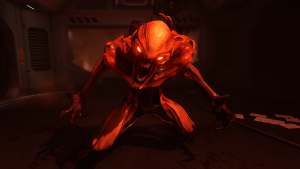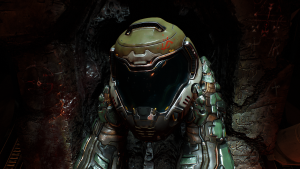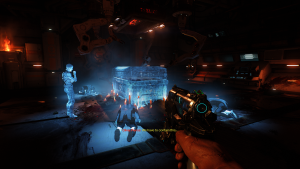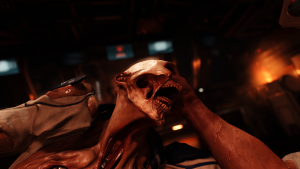In 2010, Platinum games released Vanquish, an action packed third person shooter that captured a great deal of attention for ignoring everything Gears of War codified and went hard on speed, chaos, and maneuvering over hiding behind cover. It was surprisingly short, though, ending with a downer cliffhanger. It had a deep mechanical core to it in the vein of character action games that didn’t quite gel with gamers more familiar with traditional first/third person shooters, leaving it as an overlooked cult classic.
Doom (2016) is like that, except it became one of the most popular, non-multiplayer focused shooters ever made.
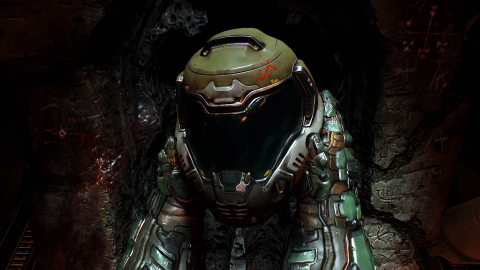
Doom (2016) isn’t just one of the best Doom games, if not the best overall, it might very well be one of the best first person shooters that has ever been made. Doom (2016) had the entire deck stacked against it, and somehow it managed to floor just about everyone with one of the most polished and visceral experiences any FPS could possibly give. Not only that, its bucking of popular design trends started an entire movement in gaming, setting off the powder keg that would allow the likes of New Blood and their contemporaries to come forth and start a retro revival wave that gave us the likes of DUSK, AMID EVIL, Project Warlock, and Viscerafest. In terms of complexity, it’s no Vanquish (that would be Doom Eternal), but it nailed the sense of fight for your life frenzy of the original classics long been missing from the scene. This game was so confident in its delivery that it opened with a quote from the Doom comic, a comic made specifically to make fun of Doom, and everyone went along with it! Turns out rip and tear is a pretty sick line, actually, but maybe less so the notably absent “I’ve gotta handful of vertebrae and a headful of mad!”
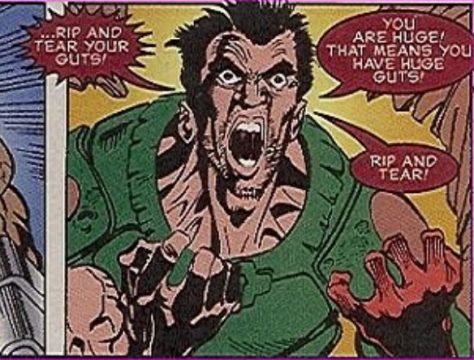
Dynamite!
There is also a common read of the game that it rejects narrative and that’s wrong. The game has unskippable cutscenes and an in-game codex as long as a short novel detailing a mess of lore and background detail. It is easy to see where the confusion comes from, though. The game starts unlike most FPS games by having you in the middle of it, waking up on a stone slab, butt naked, as the room is exploding and zombies are coming for you. Inner rage takes over, break your cuffs with the power of hate, smash a zombie’s head on the stone, grab a Quake II style blaster, headshot, get explained a few mechanics in a streamlined action set-piece, and every time the manipulative head of the facility tries to talk with you and downplay his role in the utter carnage you see before you, you destroy the device he’s sending his cowardly voice from, ending with you seeing through his crap by looking at a corpse during his monologue, shoving your elbow in an intercom, and a sick title drop where At Doom’s Gate blares and gets capped off with a shotgun pump.
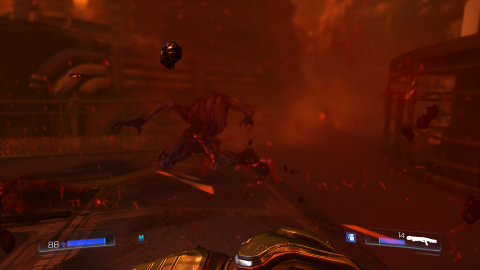
The start of Doom 2016 is not a rejection of narrative, but a defining of your player character: THE DoomSLAYER. You are now a badass who trained with an ancient society of hell warriors who rips and tears demons apart with his bare hands, described in the game as a vengeful hate golem with boiling blood out to shred every single demon for what they took from him. The slayer has seen it all before and understands exactly who not to trust. You have to listen to that facility head, Dr. Samuel Hayden, only after it becomes clear he’s holding back important information from you and has tech you need to solve the larger problem. It creates a fun dynamic, a guy you just love to piss off while you know he’s a few steps ahead of you. There’s also VEGA, the facility AI who helps you out, and Olivia Pierce, a traitorous scientist who set off a hell wave and is now trying to open a portal to the demon’s realm. The funny, subversive nature of the game is not saying story doesn’t matter, but giving you a character who cuts through the bullshit and gets to the point (with Gun). The arcs and backstory are still given out at a good pace, making it clear what everyone wanted in this tragedy you treat with the tenderness of a bull in a china shop armed with a railgun.
Demons from the old classics return in mass for this one, starting you off with zombies (the unwilling), imps, and new versions of possessed soldiers with energy blasters, shields, and a razer variant that has a cutting laser. The spectre, an invisible pinky, makes no appearances, while the chaingunner, archvile, arachnatrons, and pain elemental are kept in Doom II, though we do get the revenant back with a jetpack. Imps have the wall crawling tricks of their Doom 3 counterparts, hell knights are now bruisers that charge and melee you, the pinky is now late game and has an armored front, cacodemons fly, lost souls are basically weaker flying kamikazes from Serious Sam, the baron is now a more mobile Doom 3 hell knight with their classic look. The mancubus can now jump around and has a cyber variant with toxic shots, and the arch-vile has been replaced with the summoner, which summons monsters while teleporting around and throwing some energy waves.
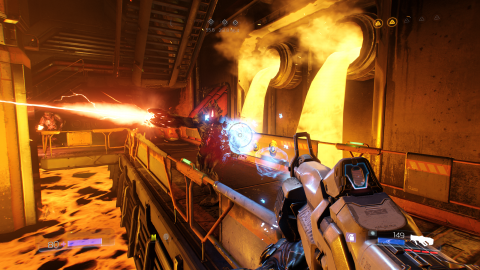
They will all be puddles of guts after dealing with the slayer for more than a few seconds. You start with a blaster with charge shot you will never use ever again, get a shotgun in quick order, a weaker plasma gun, an assault rifle, rocket launcher, super shotgun, rail gun called the gauss cannon, a chaingun with wind-up, a chainsaw, and the good old BFG. You’ll also get some extra tools in the form of frag grenades, a decoy hologram, and siphon grenades that suck the life from demons to heal you, all taken from the multiplayer.
You can also get weapon mods for the majority of your weapons (exception to the super shotgun, chainsaw, BFG, and blaster), two for each and able to switch between them with a button press. You can upgrade all guns (except chainsaw and BFG) with weapon upgrade points earned from exploring and fighting, including those mods, with a final challenge to finish with a given gun or mod to master it and get a final perk. Not all of the mods were thought out well, mind you. The charge shot with the shotgun becomes pointless with a mastered shotgun, the plasma gun’s stun bomb pales in comparison to the late game weapon set, gauss cannon’s precision bolt is nothing compared to the broken siege mode’s death laser, and the rocket launcher is just surprisingly weak in all forms it takes.
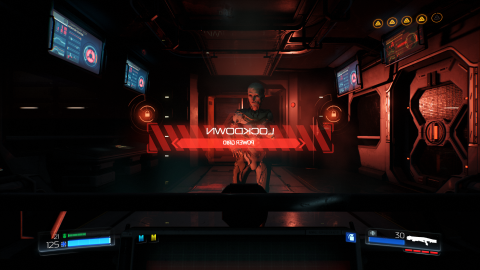
You can do rune trials to get and equip runes that give you a variety of perks, including greater ammo pick-ups, armor from glory kills, or a speed burst after you do a glory kill, and you can master them just like the weapon mods. You also get some game breaking runes in there, including one that gives you infinite ammo with high armor, mastering it causing the effect at 75 armor, which makes things much, much easier to a comical degree.
The armor upgrade system is similarly a bit unbalanced, handled with special tokens you get from the suits of fallen elite guards on the base. The dexterity and environmental resistance upgrades are musts, as is area scanning if you aren’t using a walkthrough for secrets, but equipment and power-up upgrades feel very tacked on. The equipment you get, those grenades and the hologram, are useful but easily ignored due to how absolutely ridiculous the core arsenal is, while the latter is very situational. There are only a handful of points in the campaign with power-ups, including Quake‘s quad damage and a new berserk mode to replace the old berserk packs, making it not terribly useful.

The berserk mode now doesn’t give you a damage buff, but instead gives you a short amount of time where you can glory kill anything you touch. Glory kills are the core of the game’s combat, letting you make an enemy stagger and light up with enough damage that lets you then do a melee kill that gives back health. The chainsaw is an extension, doing an instant one hit melee kill as long as you have enough gas, larger enemies requiring more gas, and it makes demons explode into ammo to restock your supply, which is very useful. Otherwise, it is what it has always been: Run, jump, shoot, find secrets, and most importantly, rip and tear.
Doom (2016), despite its verbose upgrade systems, is a simple game at the core, the early game combat being based entirely around moving and shooting to survive. Everything after that as you get upgrades gives you room to style a bit, breaking out all sorts of ridiculous weapons to gib flesh hungry demons. Learn their movement, rhythms, what works best when, and make it all second nature. You have fourteen levels of carnage to go through, and they don’t disappoint.
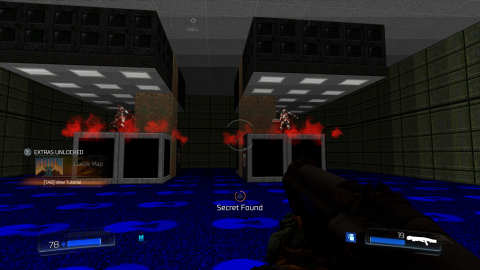
Well, for the most part. Doom 2016 has a pacing issue where you get most everything around the time you defeat the new cyberdemon, which leaves the core combat to move the game with less reason to chase collectibles. The game makes you arguably too powerful, and while it can be fun, levels tend to be on the long side. A mixture of armor perks, mastered weapons, and mastered runes really make things a bit too breezy as there are no more new monsters to introduce after the pinky halfway through. The bosses also don’t impress too much for vet players, with fairly simple patterns. Not bad by any means but not exactly a change up from what came before. The multiplayer also didn’t really capture much attention, even with gimmicks like being able to turn into a demon. The pretty cool snapmap editor also never managed to surpass the classic modding scene in terms of popularity, despite letting people make maps for multiple modes of play.
These make up the Achilles heel of the game, though it gets mitigated by the grotesquely beautiful art style, like a mixture of grungy comic art with high res sci-fi, and the absolutely banger of a soundtrack. The game’s composer, Mick Gordon, was mostly known for Need for Speed and a variety of Nicktoon games, up until he did some work on the Wolfenstein reboot. That probably got his foot in the door for Doom, where he was instructed not to make metal or use guitars (though he snuck them in later) but instead do something different. They did mention they loved synths, though, so Gordon used subs (a very low electronic sound) to create a subtle backtrack.
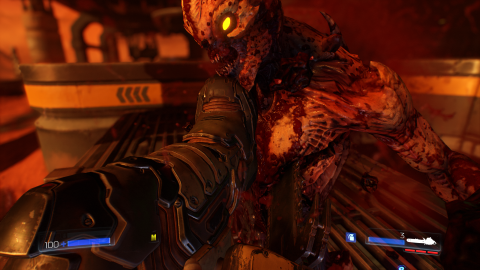
Then, using an audio trick from David Bowie’s Heroes, he made a system that could dynamically produce musical bits based on input, mixing things up and down to create unique music with a harsh quality. It worked perfectly with modern stem systems games use today to make music naturally shift, resulting in a cool effect where your rhythm in play decides the music’s. There’s a lot of experimentation in these as well, including harsh noise, and in the case of Hellwalker, the sound of an actual chainsaw. Absolutely metal, what a lad. The soundtrack is also surprisingly varied and even works in tunes from older games, including Doom 3‘s rocking theme in Harbinger.
There’s plenty of nice little touches as well, including slow down when you have the weapon wheel out (which ties to an exploit with the BFG, popular with speedrunners), and the cute little doomguy figure secrets that unlock model viewers. Outside the odd pacing problems, Doom (2016) is lean, mean, and has the spirit of the old classics mixed with flourishes of the new era. It was a shot in the arm, giving an entire new generation something they never thought they wanted before. Doom wasn’t just back, it may have become bigger then it had ever been before, and that was pretty damn big. The game sold well at first, and then word of mouth caused it to explode in popularity, and even if you haven’t played it, chances are you know a ton about it just from people talking about it. Doom (2016) wasn’t just a hit, it was a phenomenon, and it inspired hundreds of smaller developers to throw their hat in the ring and give tribute to the 90s FPS, or some to other eras, or use that as a base for something new (see ULTRAKILL, Nightmare Reaper).
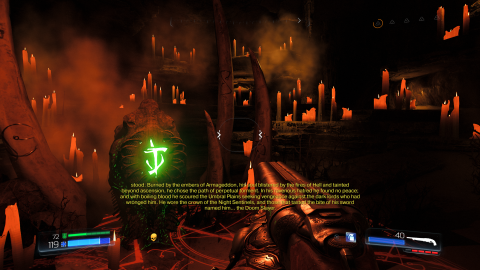
That success secured a sequel, and in that process, Hugo Martin seemed to get more creative control over the final product judging by just how much more the sequel would be. Whether that was a good or bad thing is up to interpretation.
The game saw ports to all consoles at the time. These are far better than ports in previous generations, with the PlayStation 4 and Xbox One versions aiming at 60 FPS (though there are some drops). The Switch version maxes out at 30 FPS and uses dynamic resolution to keep up in harrier moments, but is still a fantastic conversion given the much weaker hardware.
There is also a VR game called Doom VFR. Not a lot of people like it due to poor controls and weird bugs that made it difficult to play. You play as a guy put in a robot body and gets turned off by Hayden at the end, has no importance to the franchise narrative, might actually clash with a later Eternal canon addition, easily ignored.
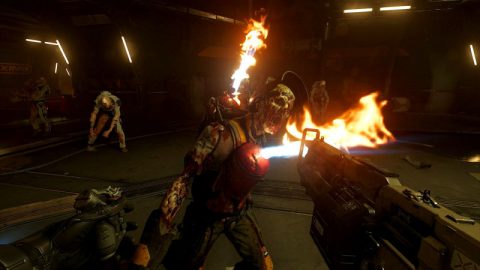
Doom VFR (PS4 promo screen)
